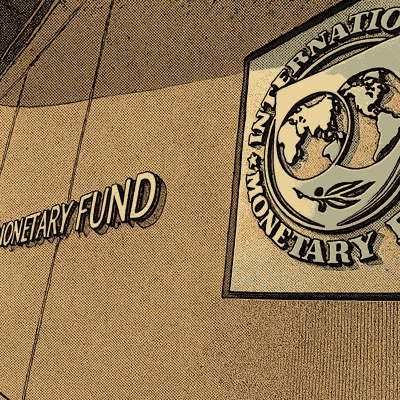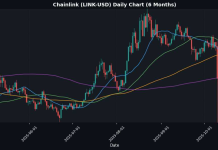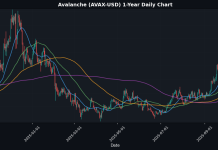In the rapidly evolving landscape of digital finance, the International Monetary Fund (IMF) has long been a voice of caution, warning against the risks of unregulated innovations like stablecoins and tokenization. Yet, as of September 2025, IMF economist Hélène Rey’s latest piece in Finance & Development highlights a nuanced shift: Technology is reshaping capital flows and currency dominance, with stablecoins poised to solidify the U.S. dollar’s hegemony while posing profound threats to financial stability and fiscal revenues. Published amid the U.S.’s new legal framework for stablecoins, Rey’s analysis underscores the IMF’s transition from initial skepticism—shared by agencies like the BIS and FSB—to reluctant acknowledgment of these tools’ inevitability. This comes as national regulators, after years of hesitation, scramble to adopt frameworks, often lagging behind private sector advancements. Rey’s 1,403-word essay warns of a potential return to 19th-century private money chaos, fragmentation, and “integrity privilege” for secure networks, urging international cooperation to harness benefits while mitigating perils. As stablecoin market caps surpass $200 billion, this piece reflects the IMF’s late pivot toward constructive engagement, highlighting the tension between innovation and oversight in a tokenized world.
The IMF’s journey with digital assets mirrors broader institutional wariness: Early reports flagged risks like money laundering and volatility, but recent works, including Rey’s, emphasize strategic implications for global finance. This evolution contrasts with national regulators’ delayed responses, where initial bans or inaction have given way to frameworks like the EU’s MiCA and U.S. GENIUS Act—often reactive rather than proactive.
IMF and Global Agencies’ Initial Skepticism: A Cautionary Stance
From the outset, the IMF and peers like the Bank for International Settlements (BIS) and Financial Stability Board (FSB) approached stablecoins with deep suspicion. In 2019, the IMF’s Global Financial Stability Report labeled them a “systemic risk” due to potential bank runs and illicit flows, echoing BIS warnings on “shadow banking” parallels. Rey herself, in prior works, highlighted how unbacked cryptos could undermine monetary sovereignty.
This skepticism stemmed from real threats: Stablecoins’ promise of fiat stability via reserves (e.g., US Treasuries) masked vulnerabilities like depegs (e.g., TerraUSD’s 2022 collapse) and regulatory arbitrage. Agencies feared dollarization in emerging markets, eroding local currencies and fiscal control. The FSB’s 2020 framework called for stringent oversight, viewing stablecoins as hybrids of money market funds and narrow banks—without interest payments or full backing guarantees.
Yet, as Rey notes, initial dismissals overlooked positives: Faster remittances and access in weak financial systems. The IMF’s early focus on risks delayed constructive policy, allowing private issuers like Tether (USDT) to dominate with $120 billion in circulation by 2025.
Late Adoption by National Regulators: From Resistance to Reluctant Frameworks
National regulators’ path has been marked by lag, with initial bans or inaction giving way to frameworks only after market pressures mounted. In the U.S., the SEC’s 2019-2023 crackdowns treated stablecoins as securities, stifling growth until the 2025 GENIUS Act mandated 1:1 reserves and audits, boosting adoption. This “late pivot” followed years of skepticism, as Rey implies, allowing offshore dominance.
Europe’s MiCA (2024) was proactive but slow to implement, with full stablecoin rules delayed until 2025. Emerging markets like India banned crypto in 2018, only to partially lift in 2023 amid IMF prodding. China’s outright ban persists, contrasting with Singapore’s MAS framework embracing tokenization.
Rey critiques this delay: Private standards could fragment systems, privatizing seigniorage and enabling laundering. Late adoption risks “currency competition” instability, with stablecoins hollowing banks and eroding tax bases—potentially costing governments billions.
Rey’s Key Insights: Stablecoins and Tokenization’s Double-Edged Sword
Rey’s essay dissects how these technologies could unify capital flows via programmable platforms but threaten stability. Stablecoins, pegged to fiat (mostly USD), bridge traditional finance and crypto, serving as ramps for speculation or cross-border payments—especially in sanctioned or controlled economies.
Positive potentials:
- Efficiency Gains: Tokenization enables peer-to-peer transfers, slashing remittance costs (e.g., 6% global average) and enabling programmability for policies like conditional aid.
- Inclusion: In governance-weak nations, stablecoins offer stable stores of value, bypassing inefficient banks.
Risks abound:
- Dollarization and Fiscal Erosion: Massive adoption could erode local currencies, reducing seigniorage and tax revenues—Rey estimates billions lost globally.
- Stability Threats: Like narrow banks, stablecoins risk runs if reserves falter; unbacked cryptos amplify volatility.
- Fragmentation: Private issuers competing for dominance could revert to unstable 19th-century private monies, with laundering and sanctions evasion rampant.
- Data and Sovereignty: Payment data control shifts to issuers, undermining sanctions (e.g., USD’s role) and sovereignty.
Tokenization amplifies this: Recording assets on blockchains could integrate markets but spur volatility via rapid shifts. Rey warns of “integrity privilege”—secure networks gaining premiums amid quantum threats to cryptography.
Implications for Global Finance: Urgency for Cooperation
In context, Rey’s piece signals IMF’s shift toward advocacy: From skepticism to calls for regulation harnessing benefits. Yet, late regulatory adoption risks private-led fragmentation, with U.S. frameworks potentially entrench dollar dominance while others lag.
For emerging economies, risks are acute: IMF data shows crypto flows enabling capital flight, per Graf von Luckner et al. (2023-2024). Rey urges interoperability and post-quantum crypto to avert crises.
Overall, the essay underscores agencies’ evolution: Initial caution bought time, but delayed action cedes ground to innovators. As stablecoins eye $1 trillion by 2030, coordinated rules are vital to prevent a fragmented, unstable system.
Conclusion: Navigating the Tokenized Future
Rey’s analysis, amid IMF’s maturing view, highlights stablecoins’ transformative potential and perils. From early skepticism to calls for balanced regulation, the journey reflects a race against private innovation. National regulators’ late adoption underscores the need for swift, collaborative frameworks to safeguard stability while unlocking efficiencies. As technology reshapes money, data integrity and sovereignty will define winners—demanding proactive global action.
For the full article: https://www.imf.org/en/Publications/fandd/issues/2025/09/stablecoins-tokens-global-dominance-helene-rey
Disclaimer
The content on MarketsFN.com is provided for educational and informational purposes only. It does not constitute financial advice, investment recommendations, or trading guidance. All investments involve risks, and past performance does not guarantee future results. You are solely responsible for your investment decisions and should conduct independent research and consult a qualified financial advisor before acting. MarketsFN.com and its authors are not liable for any losses or damages arising from your use of this information.





